Abstract
Certain 2-haloethylamine compounds which exert antagonism to adrenaline and noradrenaline of the type shown by dibenamine have been examined. The compounds were N-ethyl-N-chlorobenzyl-2-chloroethylamine hydrochlorides in which the Cl is in the p-, o-, and m- positions of the benzene ring, and the three related ethyleneiminium picrylsulphonates. In addition the Cl- and Br- compounds of the N-ethyl-N-9-fluorenyl-2-haloethylamine hydrohalide series were examined. For the haloethylamines, a curve was provided which showed the relation between probable production and decay of ethyleneiminium ion in neutralized solution with time. A correlation was established between the shape of this curve and the curve relating anti-adrenaline and anti-noradrenaline activity of samples of solutions of these compounds treated in an identical way. The relation to antagonism of histamine and 5-hydroxytryptamine was not so exact and varied with species.
The ethyleneiminium ions of the three chlorobenzyl compounds exerted a typical long-lasting non-competitive antagonism to the pressor actions of adrenaline and noradrenaline. They also antagonized the effect of 5-hydroxytryptamine and histamine on blood pressure. The ED50 of the ion when administered as ethyleneiminium picrylsulphonate was always less than the ED50 of the same ion when administered in the form of 2-haloethylamine. There was, therefore, a variable loss of effective ion during transformation in vivo. The observations throw some light on the importance of the substituent groups on the nitrogen atom for effectiveness. It is concluded from these results and a discussion of other work that 2-haloethylamine compounds form an ethyleneiminium ion in neutral solution, which is the pharmacologically active species in effective compounds. It is a necessary but not a sufficient condition that a molecule should be an alkylating agent for this type of antagonism to be present, but the importance of the substituent groups on the N atom is equally great because not all ethyleneiminium ions are effective antagonists.
Full text
PDF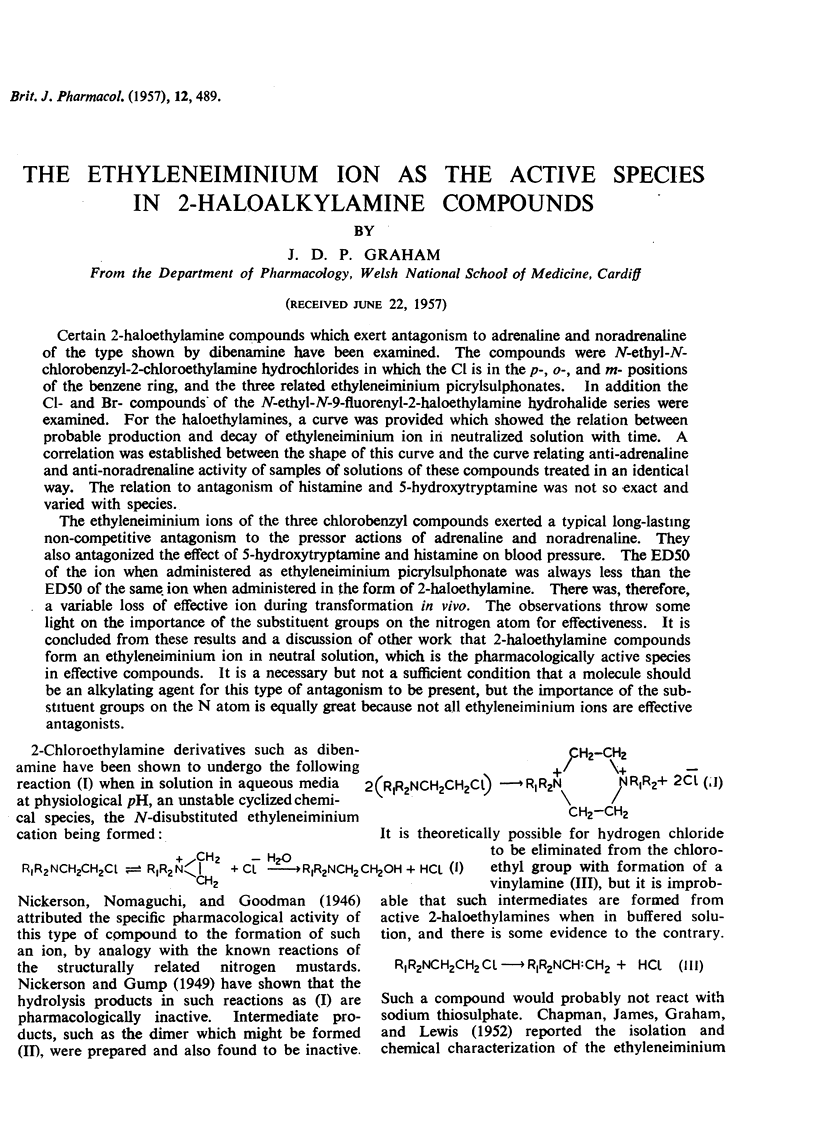
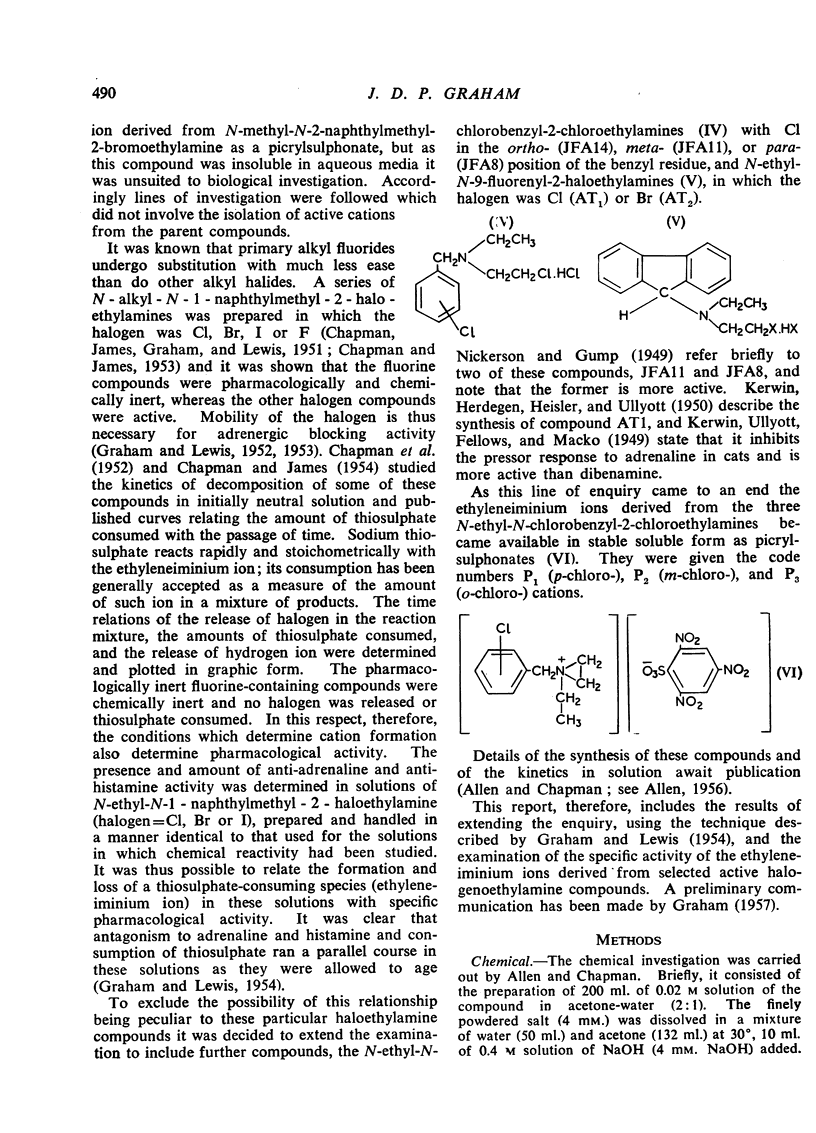
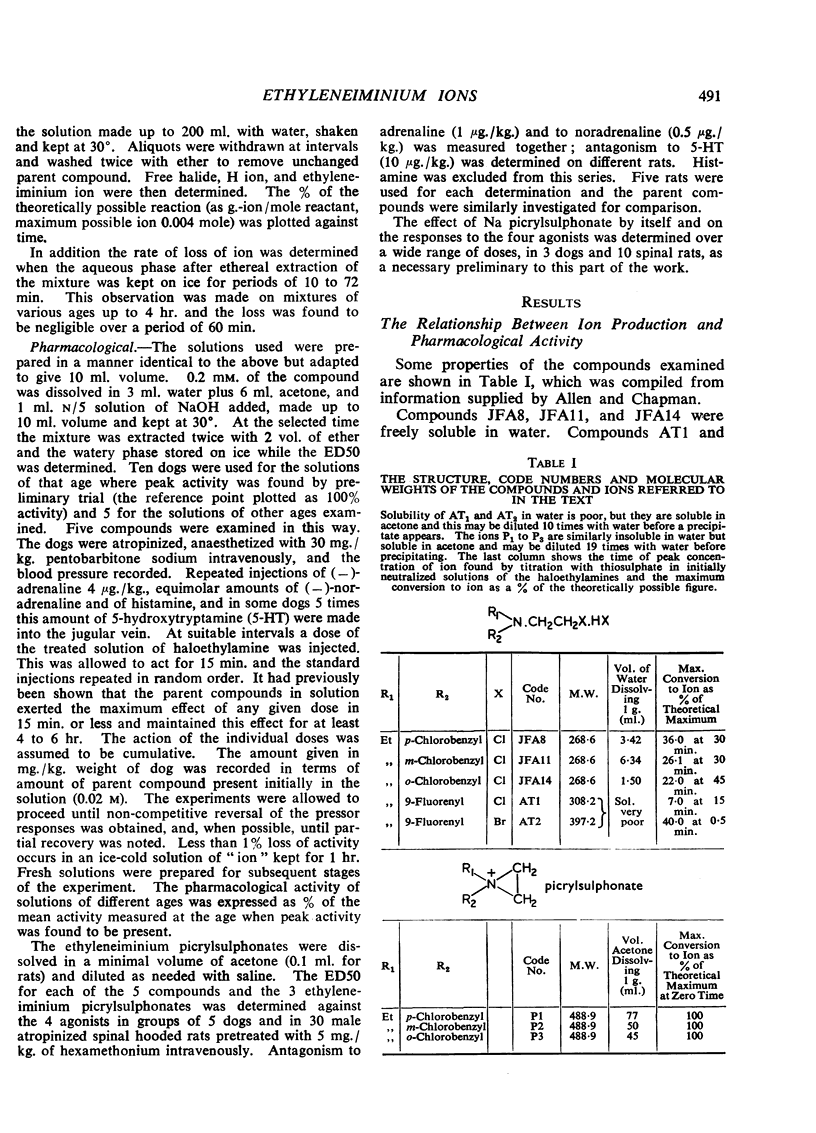
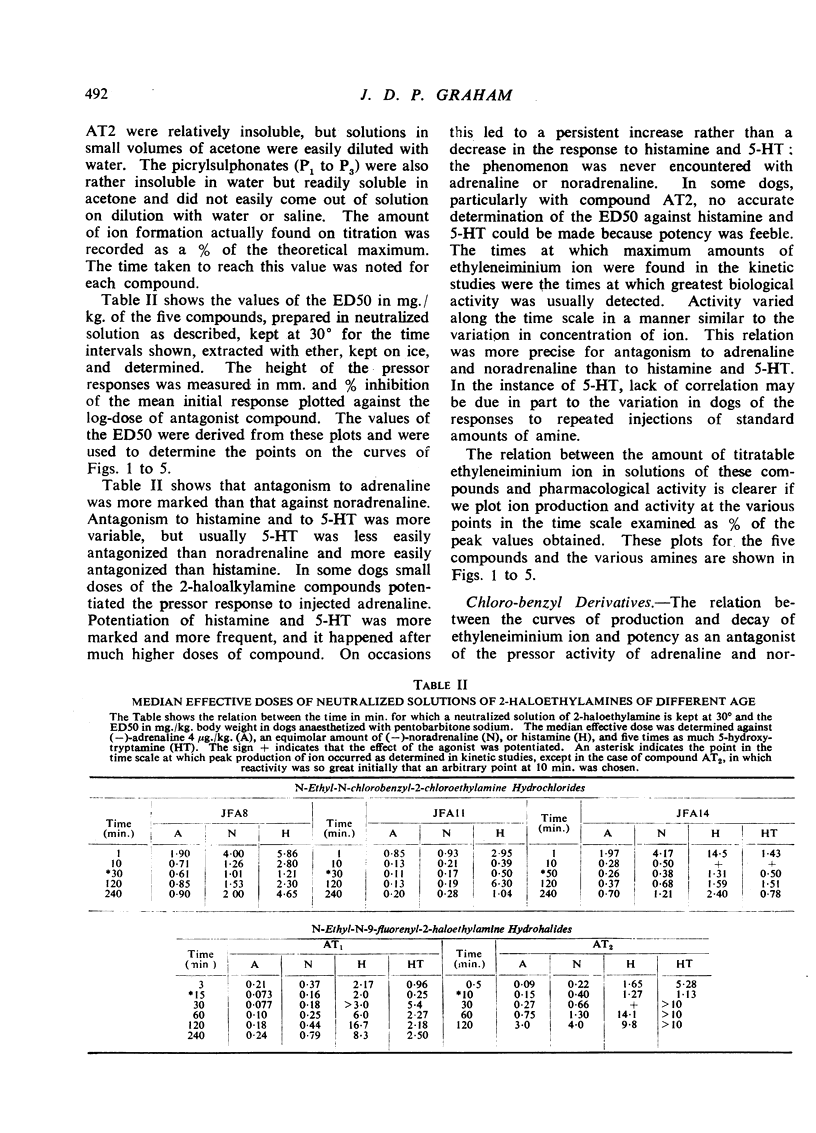
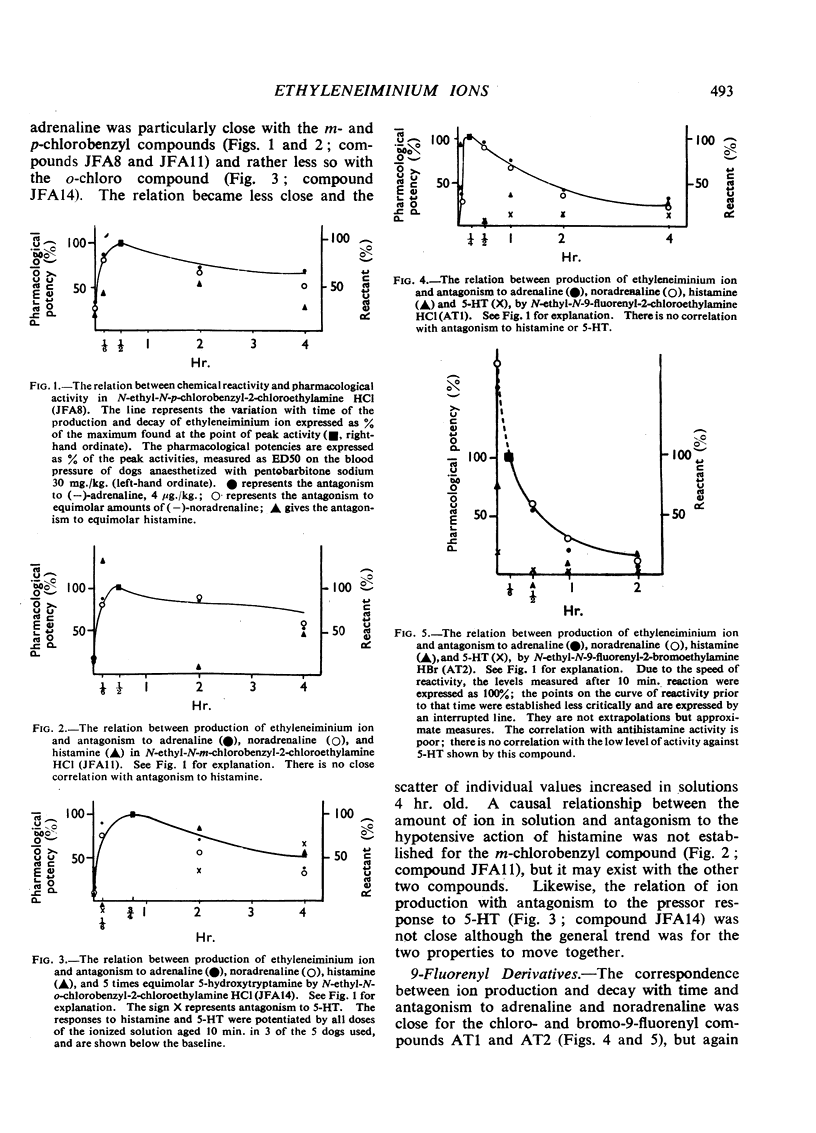
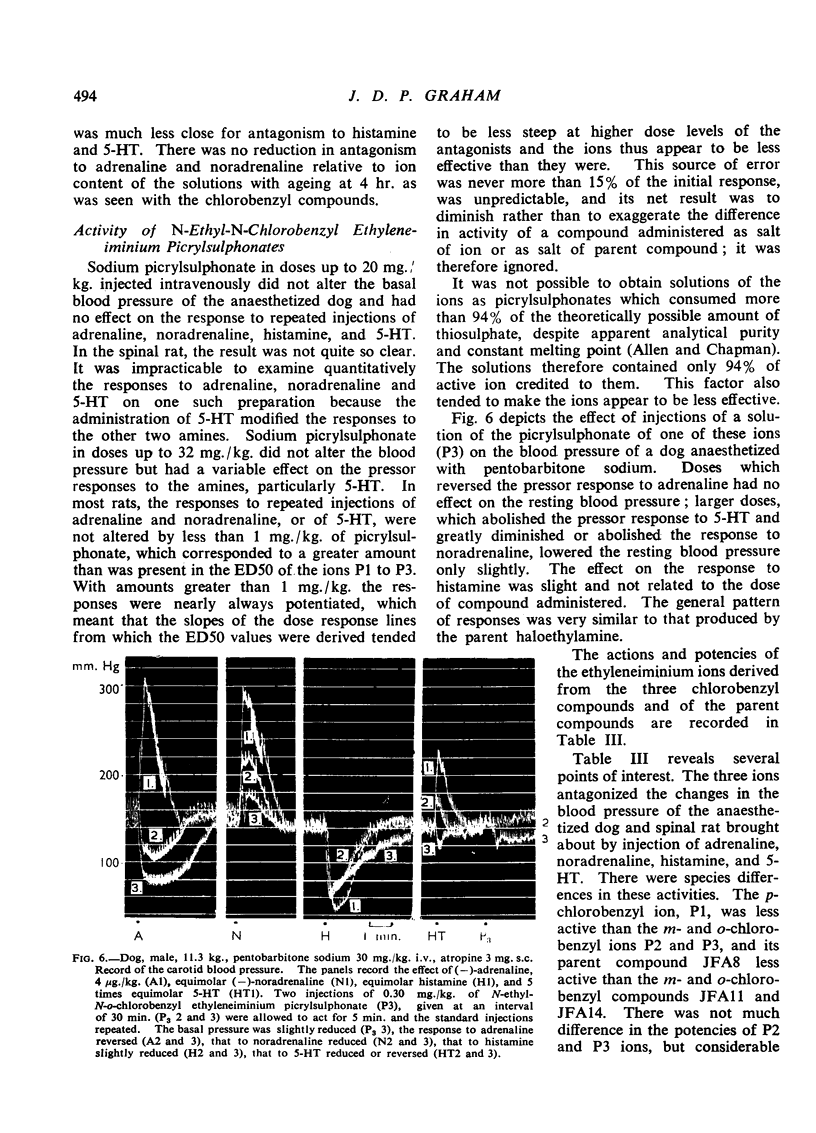
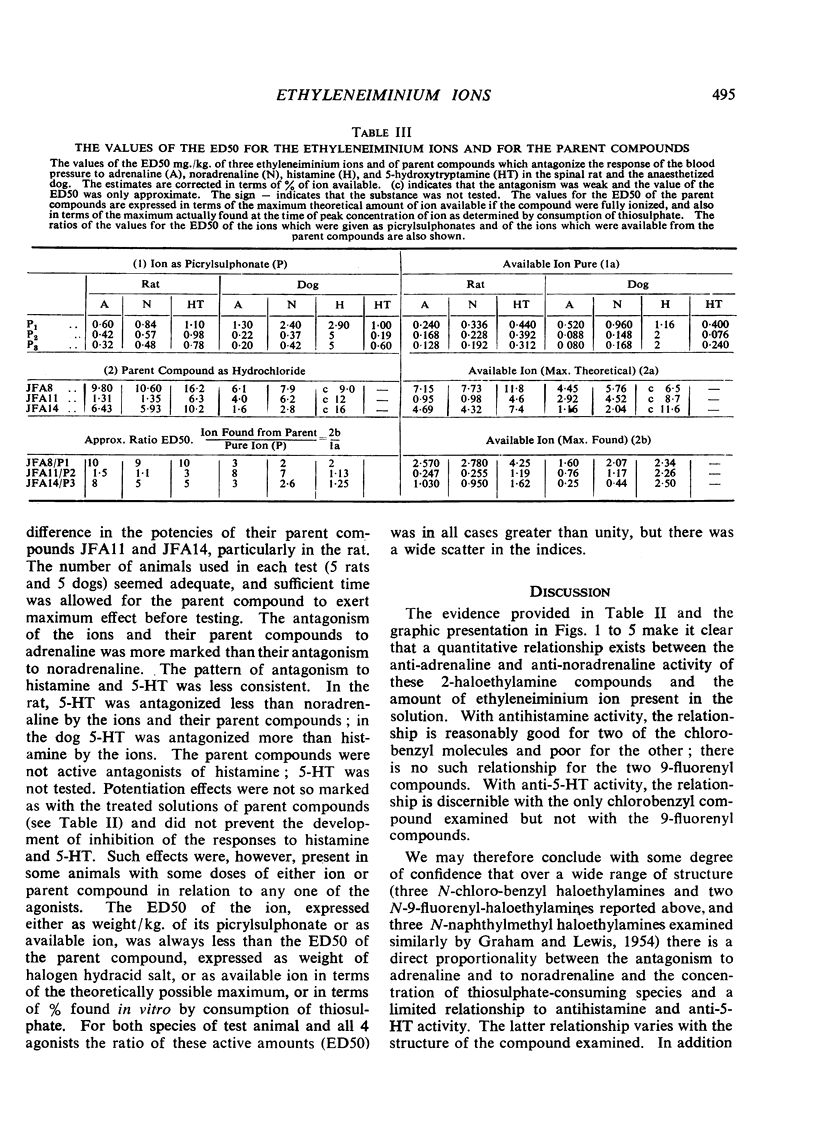
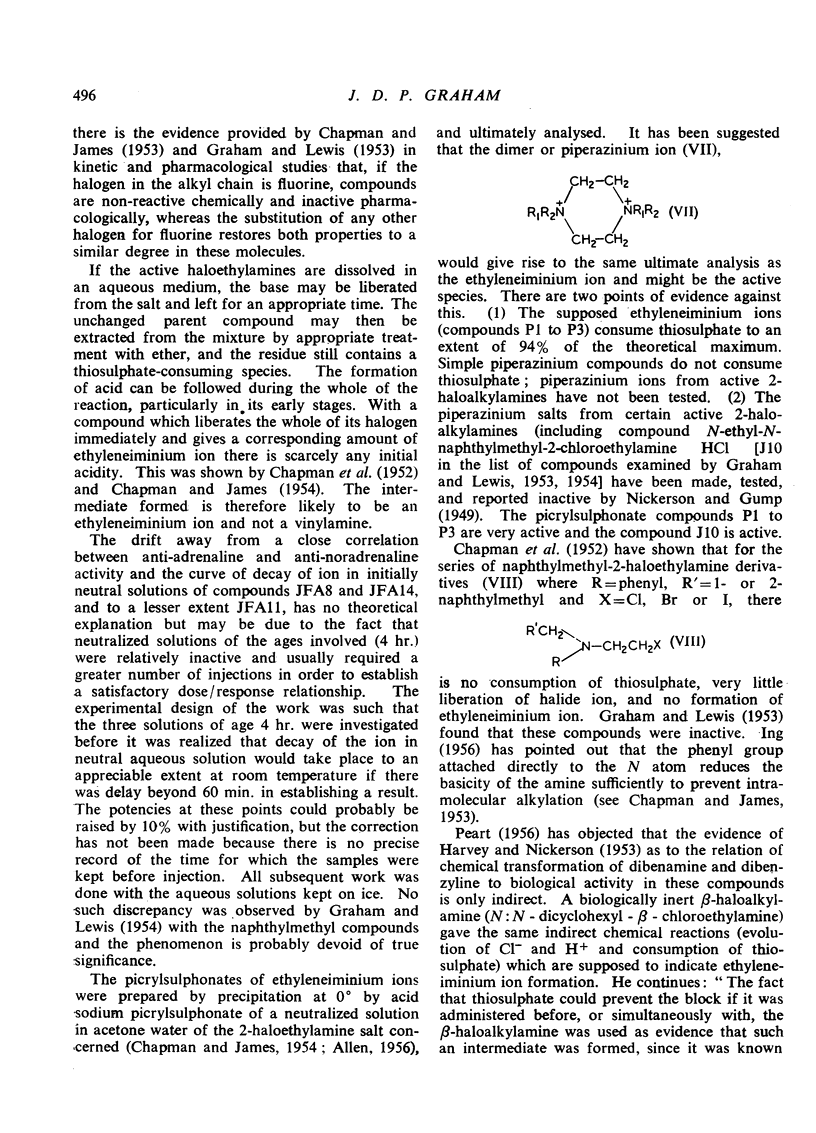
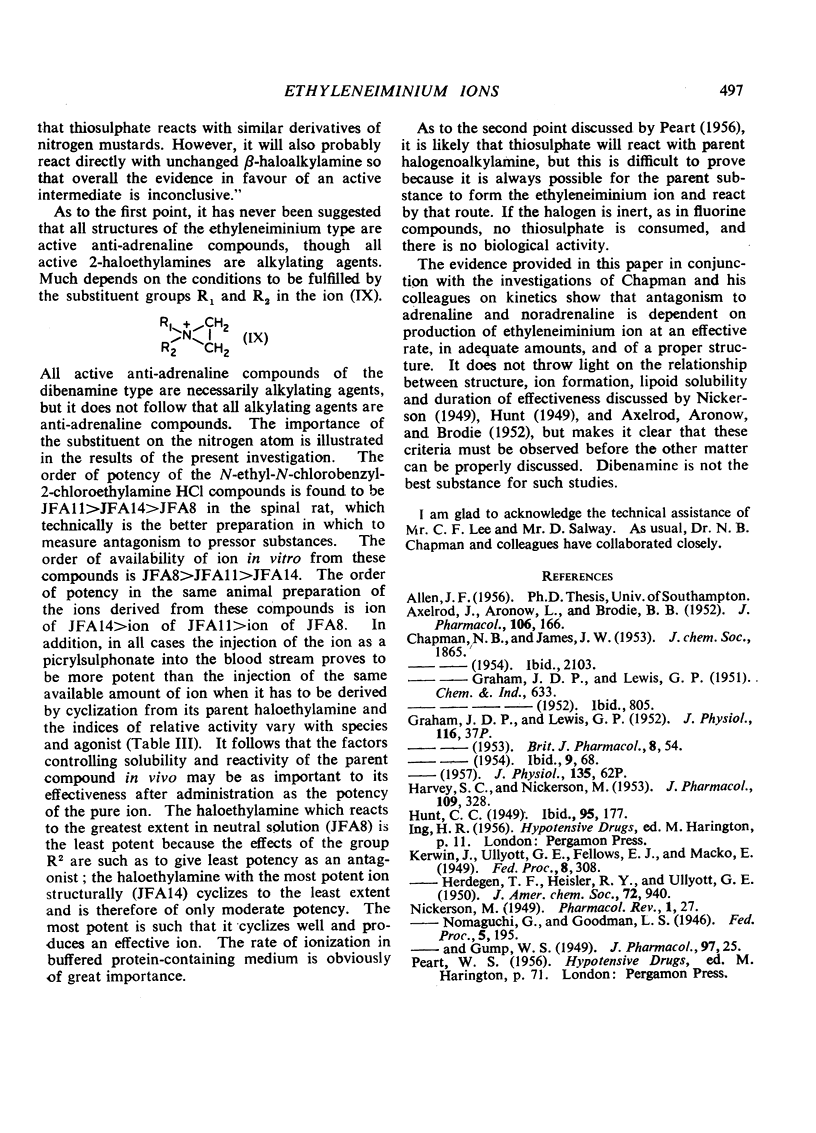
Selected References
These references are in PubMed. This may not be the complete list of references from this article.
- AXELROD J., ARONOW L., BRODIE B. B. The physiological disposition and biotransformation of dibenamine and a method for its estimation in biological tissues. J Pharmacol Exp Ther. 1952 Oct;106(2):166–179. [PubMed] [Google Scholar]
- GRAHAM J. D. P., LEWIS G. P. Relationship between anti-adrenaline and antihistamine activity in a series of beta-haloethylamines. J Physiol. 1952 Mar;116(3):37p–38p. [PubMed] [Google Scholar]
- HARVEY S. C., NICKERSON M. The chemical transformations of dibenamine and dibenzyline and biological activity. J Pharmacol Exp Ther. 1953 Nov;109(3):328–339. [PubMed] [Google Scholar]


